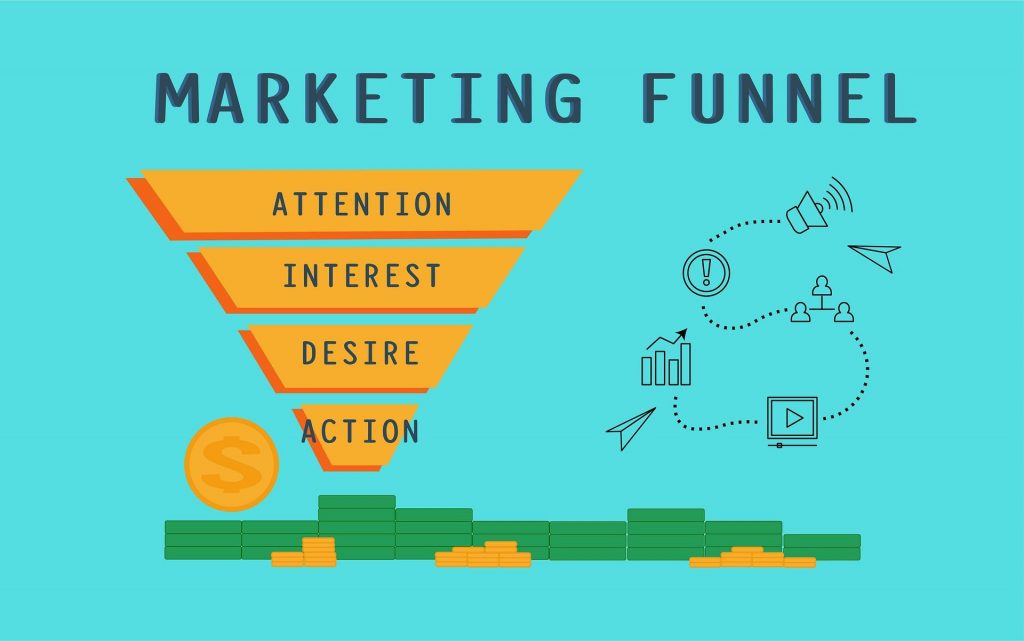If you are involved in marketing or run your own business, you have probably come across the term Marketing/Sales Funnels. Today I will tell you a little more about what they are, what they are for, and how to create them.
What are marketing funnels?
A marketing funnel is a path that a consumer must follow from the moment they first learn about your brand to the moment they become a customer (make a purchase). Sometimes the funnel also includes the buyer's next actions that have sales significance, such as cross-selling, upselling or recommending a service/product to others.
There will always be some potential customers who will drop out along the way, for a variety of reasons. This is why the design of this path resembles the construction of a funnel (and that's where its name comes from). In both cases, there are the most people at the top, and the fewest at the bottom.
Funnels can be very general or very specific, spelling out every single action a person needs to take throughout the journey. They are usually divided into three segments – TOFU, BOFU, and MOFU.
TOFU – Top of the Funnel
MOFU – Middle of the Funnel
BOFU – Bottom of the Funnel
The above funnel is of course a very simple form, you will find more details below :)
What are funnels for?
At the same time, for people who are already at an advanced stage of decision-making, sales remarketing can be an ideal form of communication – reminding them of the products they have viewed and are currently considering. We can then emphasize their value once again. On the other hand, we do not necessarily want to talk about bathroom design ideas that will only distract from the target product.

Optimization, optimization and more optimization
- A person from the target group clicks on an advertisement for a free e-book.
- She then signs up for the newsletter to receive the guide.
- As a subscriber, she receives regular emails that also contain product ads. At some point, she clicks on one that piques her interest.
- Then, she is retargeted, which are ads showing products she has viewed. She clicks on one of them and goes to the product page.
- Adds a product to the cart.
- Completes the data and makes the payment.
- A person from the target group sees an advertisement for a free ebook.
- Then he clicks on the ad.
- After going to the website, he enters his e-mail address and subscribes to the newsletter.
- Receives and opens emails.
- At some point she clicks on a product that piques her interest.
- Then he sees retargeting ads.
- Clicks on a product ad.
- When she visits the store again, she adds the product to her cart.
- Goes to cart.
- Entering the registration.
- Fills out the data and creates an account.
- Completes shipping details.
- Makes payment.
This type of activity can go on forever. Big companies like Facebook and Google are constantly creating new tests, constantly striving to improve their products.
How to build a marketing funnel?
AARRR
AIDA
AND or Action – at the end he makes a purchase action

I strongly encourage you to work, play, experiment and experiment with marketing funnels, which I believe can turn out to be a real milestone in your marketing activities.
Want more? Read our other articles:
- Written by: Michal Opydo
- Posted on: 7 Jan 2021
- Tags: funnels, Marketing, Optimization, sale

